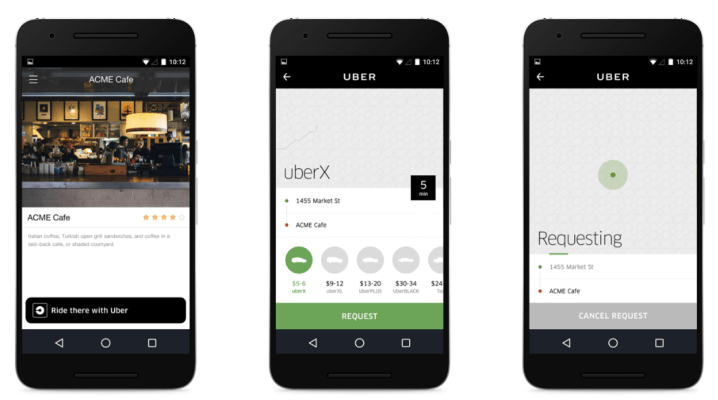Uber added a ride request button to let third-party apps add the ability to order a car last year, but today it has introduced a more feature-rich option that it is specifically targeted at developers in Asia.
The company has unveiled a ‘Ride Request Widget’ which it claimed is an easy way to add Uber’s native features into a third-party app. In particular, Uber said the widget is developed to work in places with limited internet access — in line with conditions in China, India and other parts of Asia — with “all local payment options” supported. If the ride request button is a minimalist option for developers, the Uber’s widget is the full shebang — it’s basically a mini version of the Uber app for third-parties, right from booking, to wait and drop-off.
The goal is simple: to make it easier to hail an Uber — if your favorite apps integrate ride requests then you don’t even need to open the Uber app to get a ride.
Uber has offered its API in Asia for some time, but it said this new release came about after it talked to developer partners in India, China and Australia “to learn how they engage with the API and what tools they need to be successful.”
“One of the things we heard from Chinese developers specifically is that they love the easy deployment and smooth handoff to the Uber app, but in certain cases they’d like to deeply integrate the Uber rider experience into their own apps without investing heavily in a custom Uber API implementation,” the company added.
The idea of jamming another company’s app into your app might not appeal to many Western developers, but there’s certainly evidence that a ‘kitchen sink’ approach to apps has taken off in parts of Asia. WeChat, China’s most popular app, has integrated a number of features from popular apps to turn it into something akin to a mobile portal. Uber is blocked on WeChat, most likely because its owner Tencent is an investor in Uber rival Didi Kuaidi, but the widget at least allows other developers to mimic the immersive style that WeChat has popularized.
In India, a market where overseas brands hold some cachet, Uber is trailing SoftBank-backed rival Ola, but the widget might help it in its quest to narrow that deficit.
The widget is targeted at India and China, two markets where Uber has invested countless billions to take on dominant local rivals, but it will be available to all developers worldwide from the middle of April. The terms are the same as the ride request button: Uber will pay developers $5 for each first-time rider they refer, but they are prohibited from including hooks to rival services in their app.
